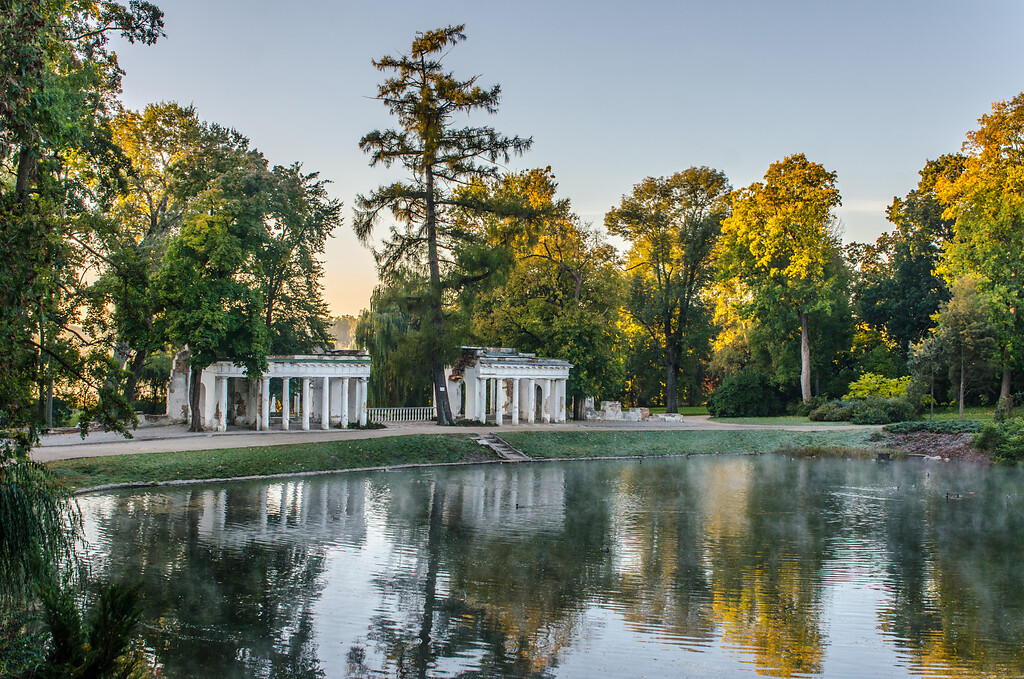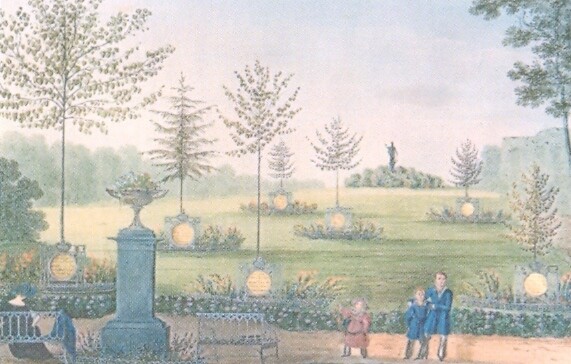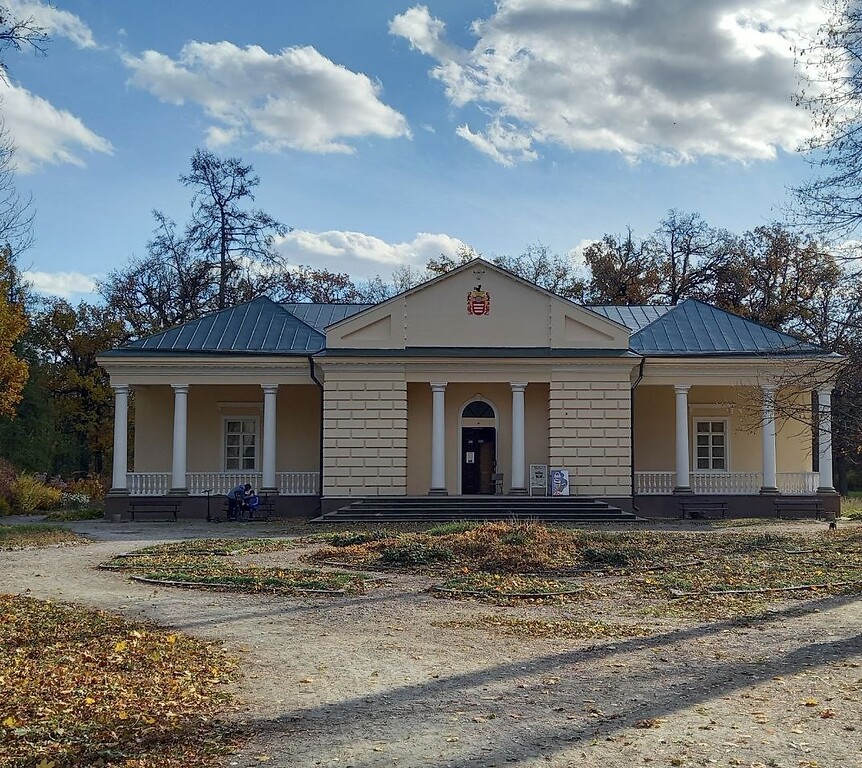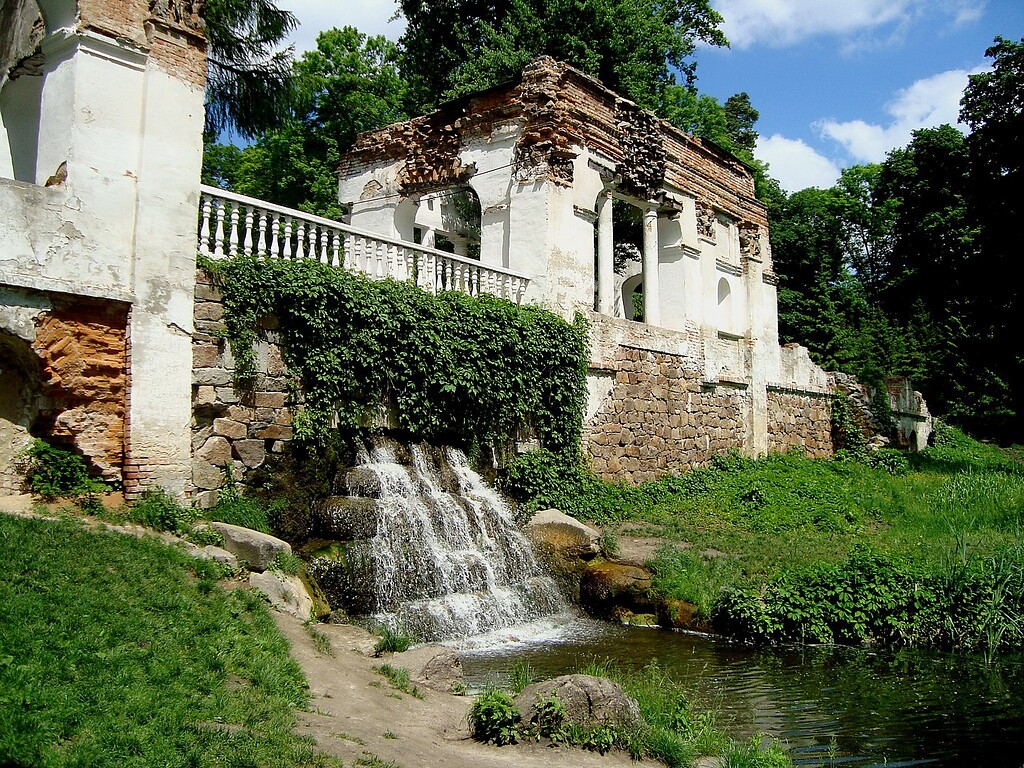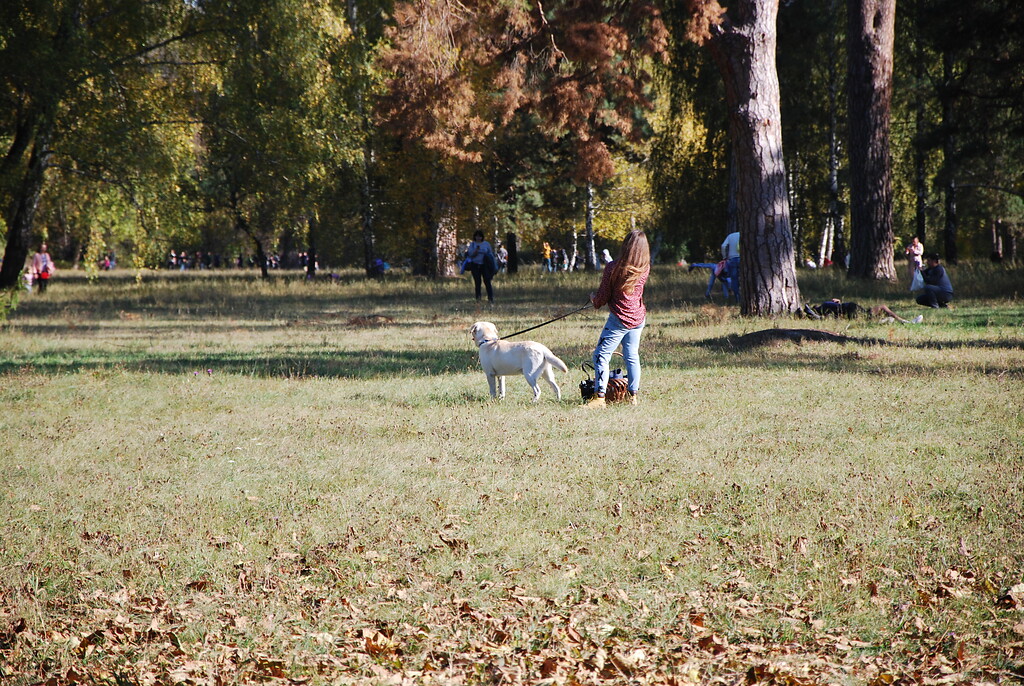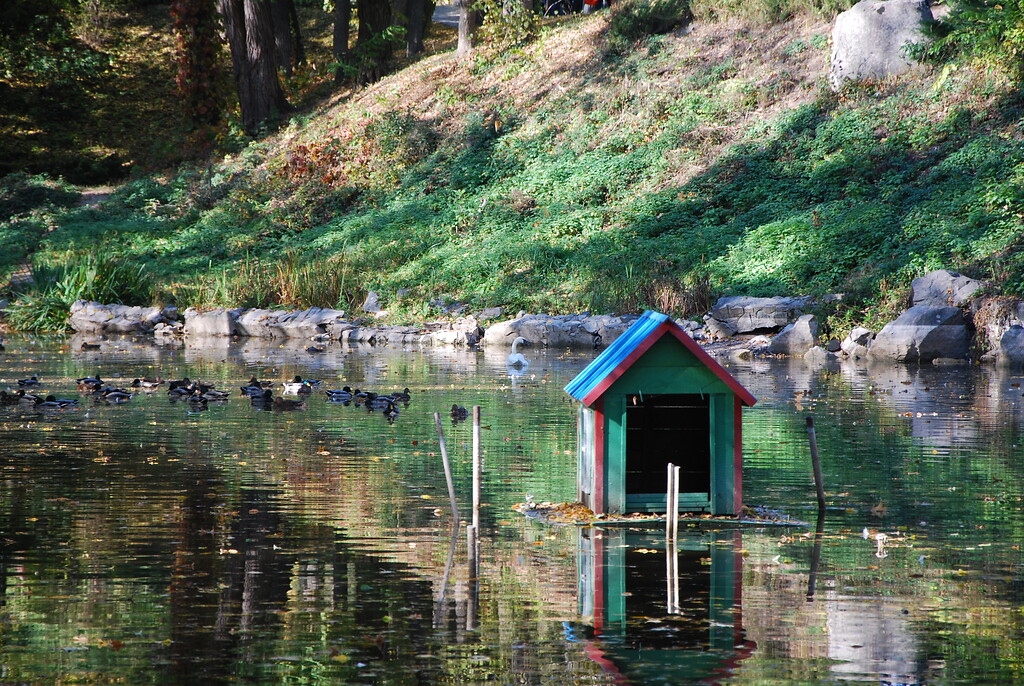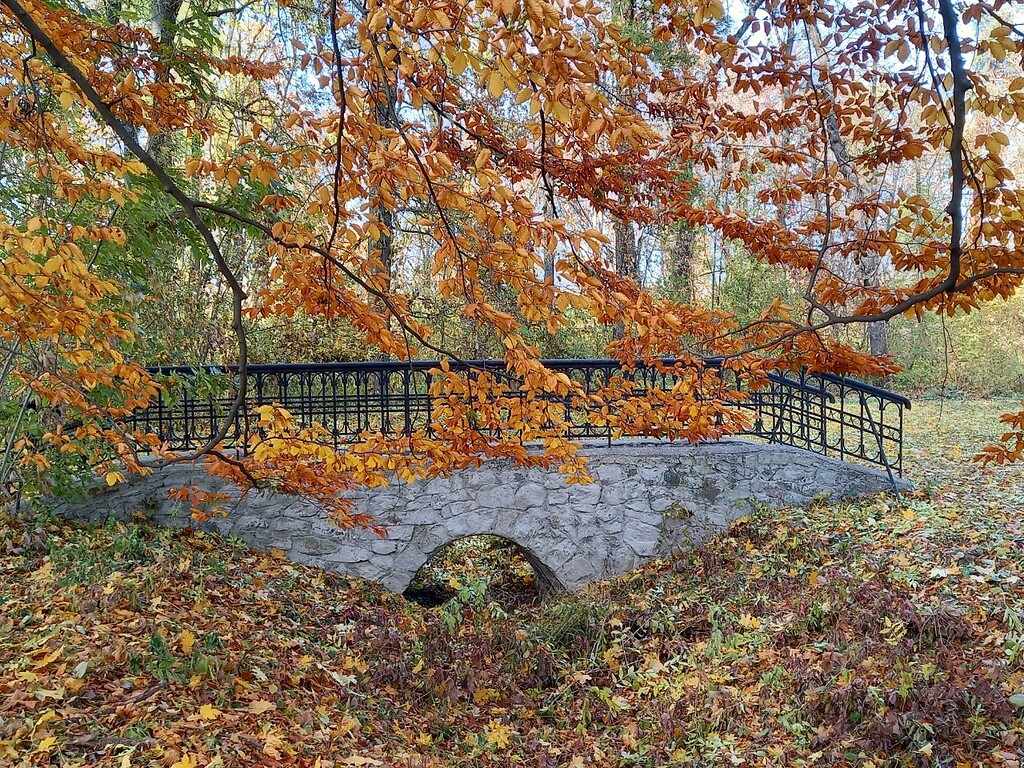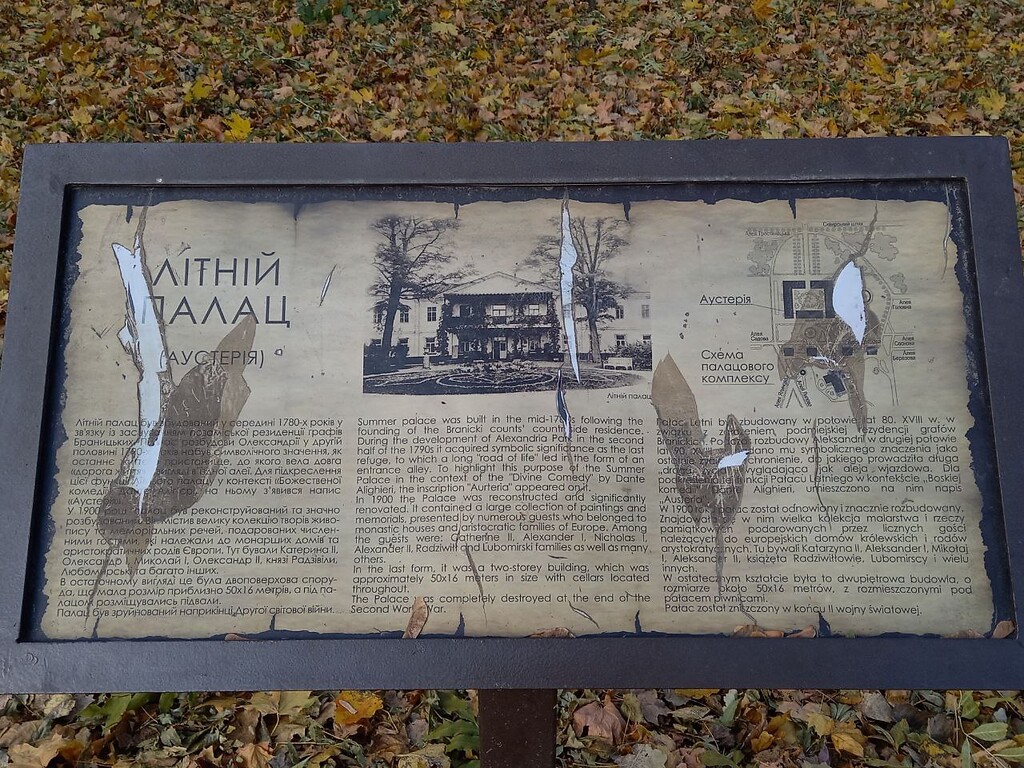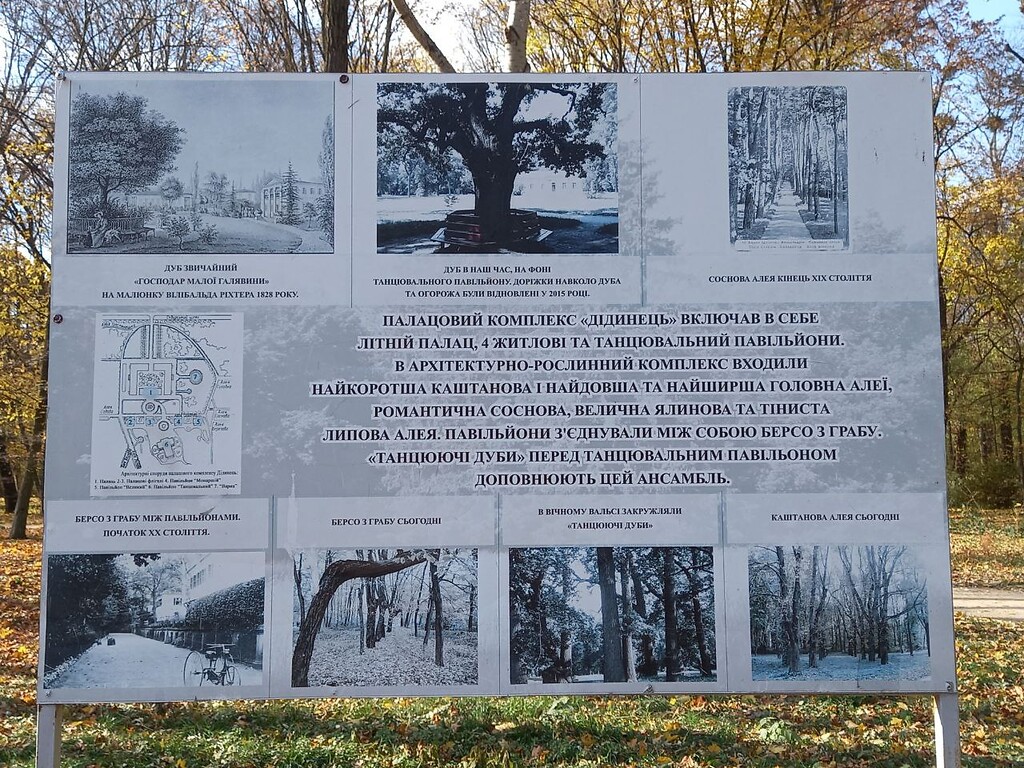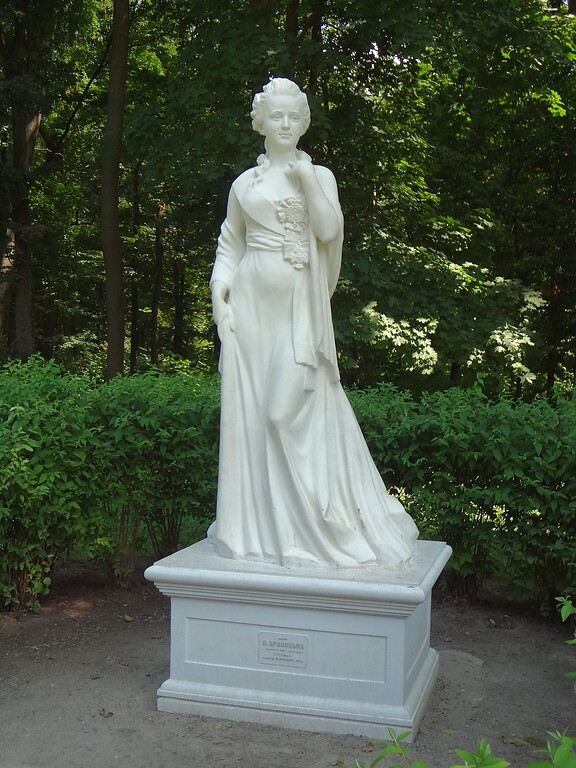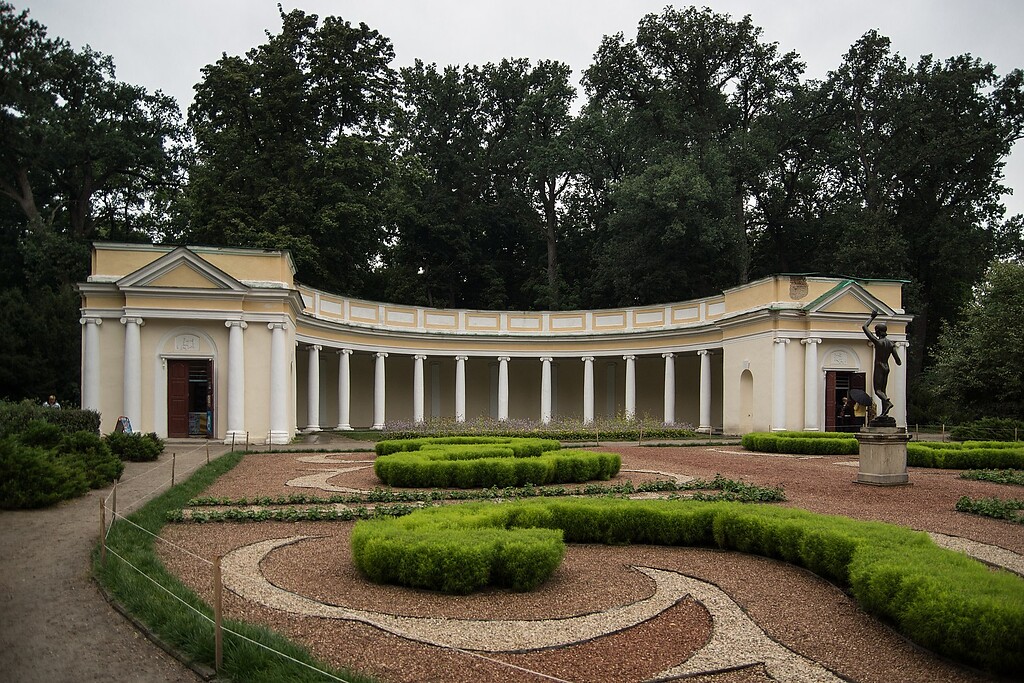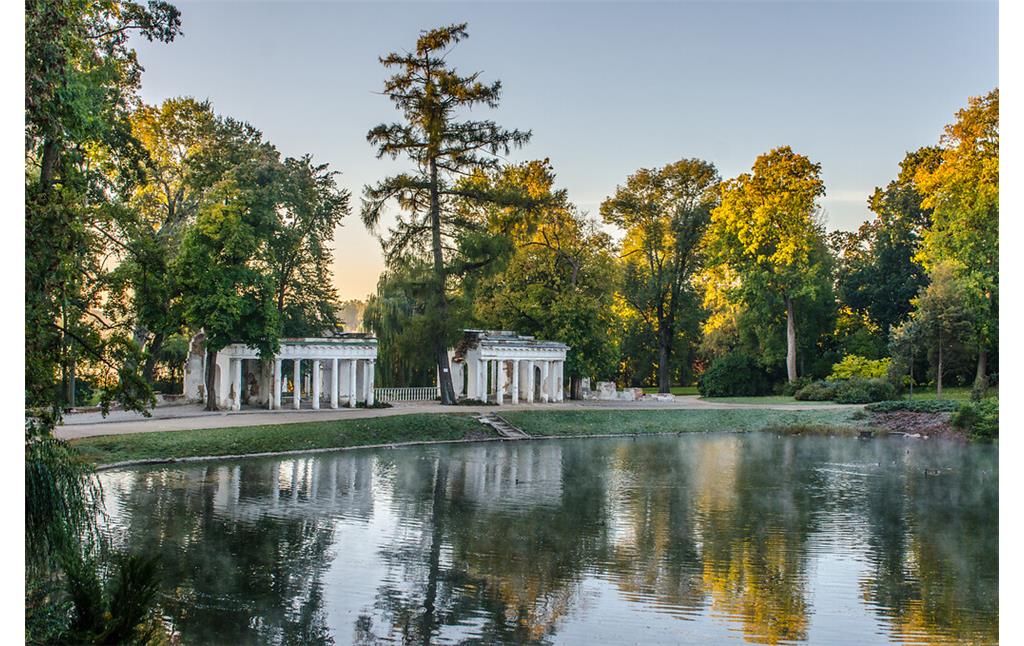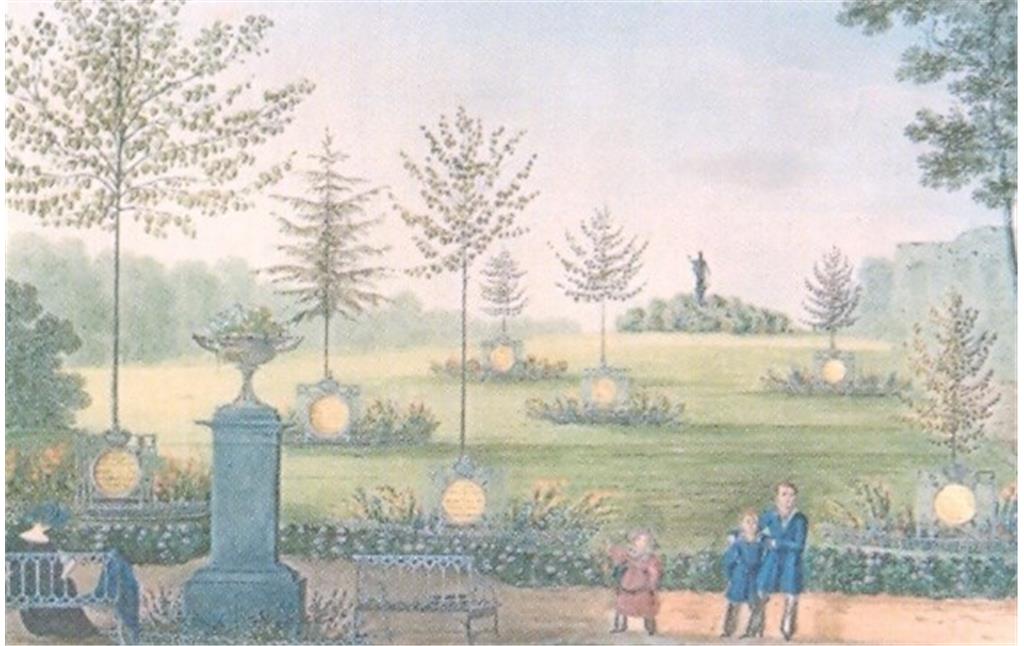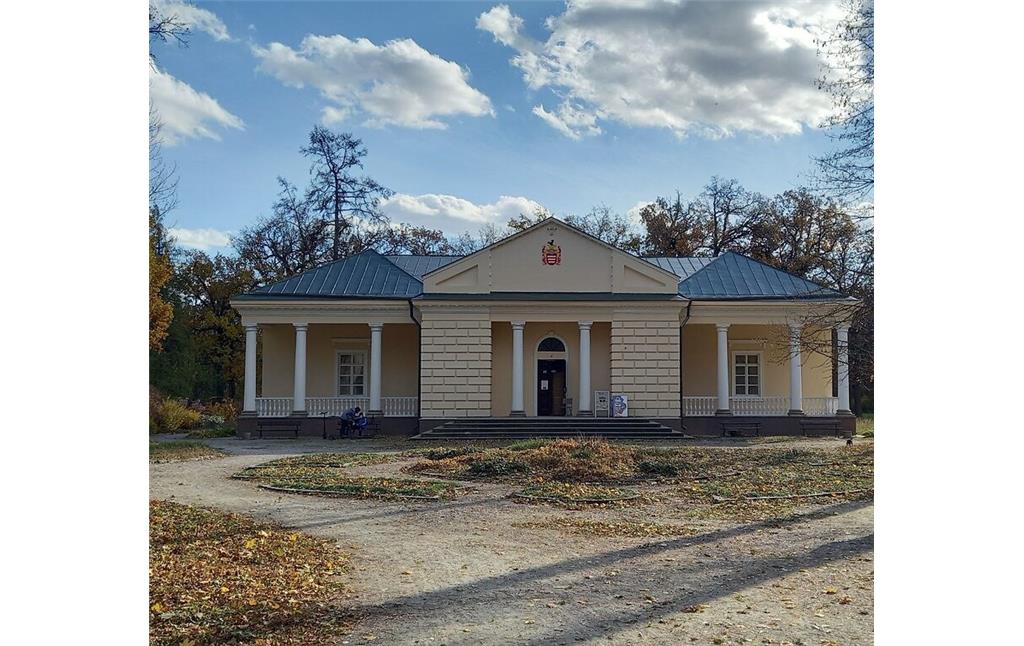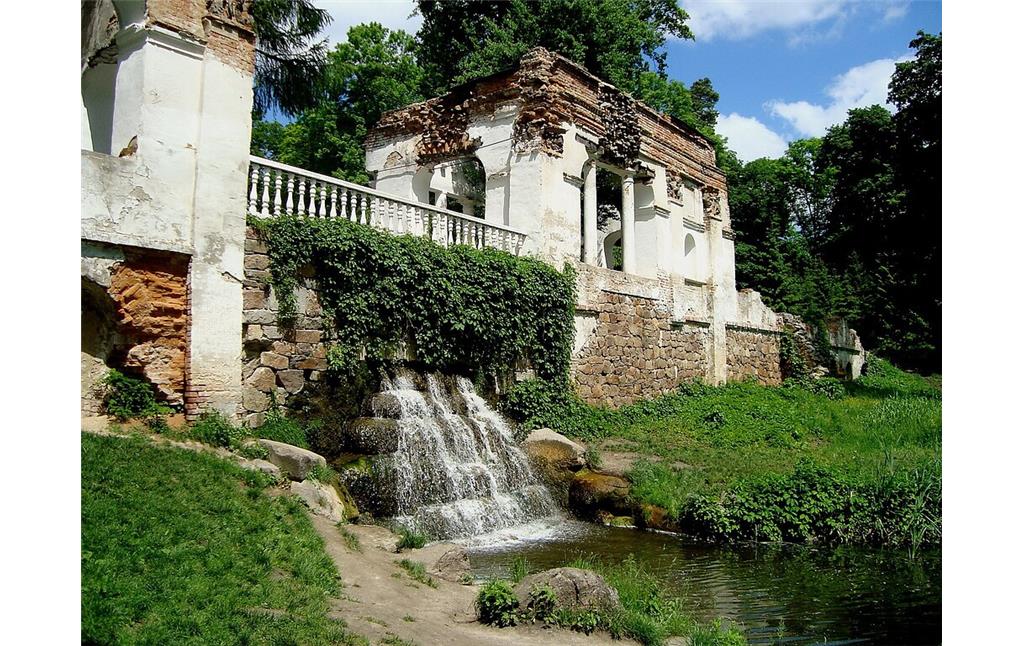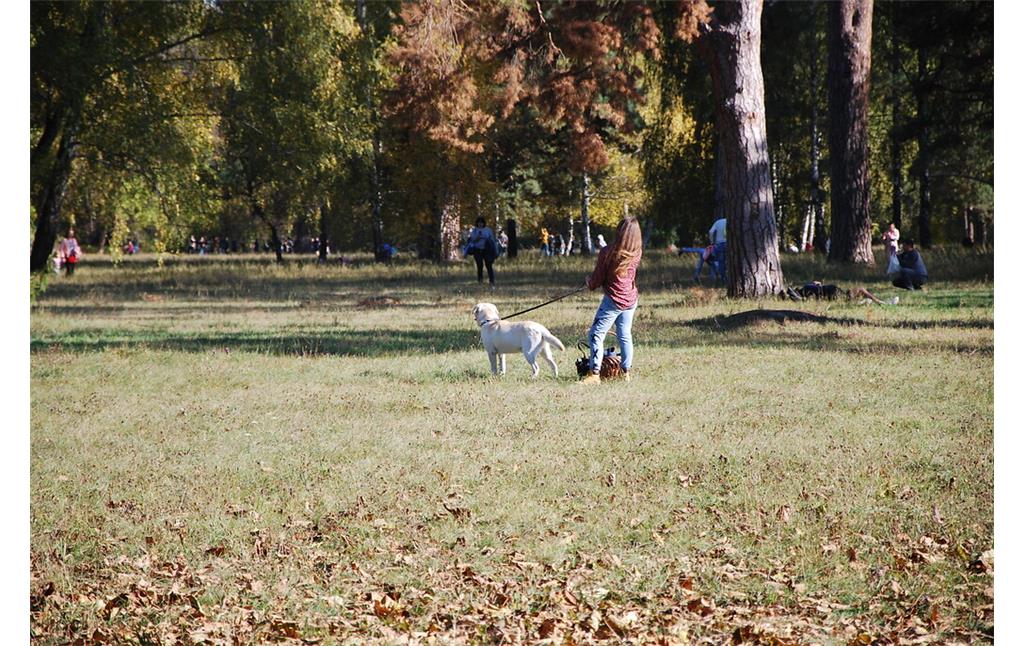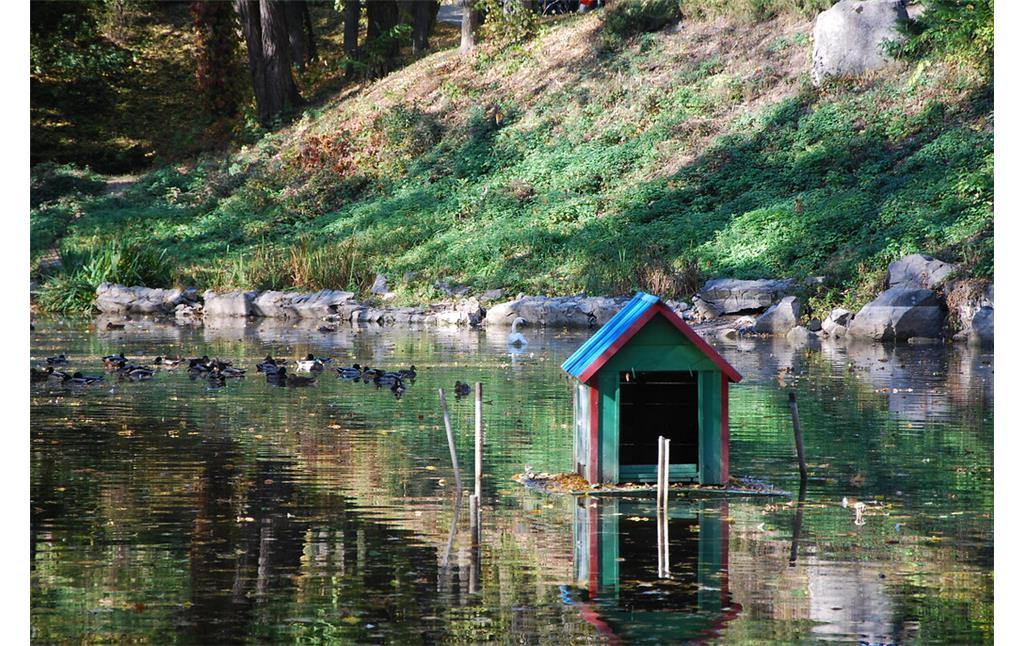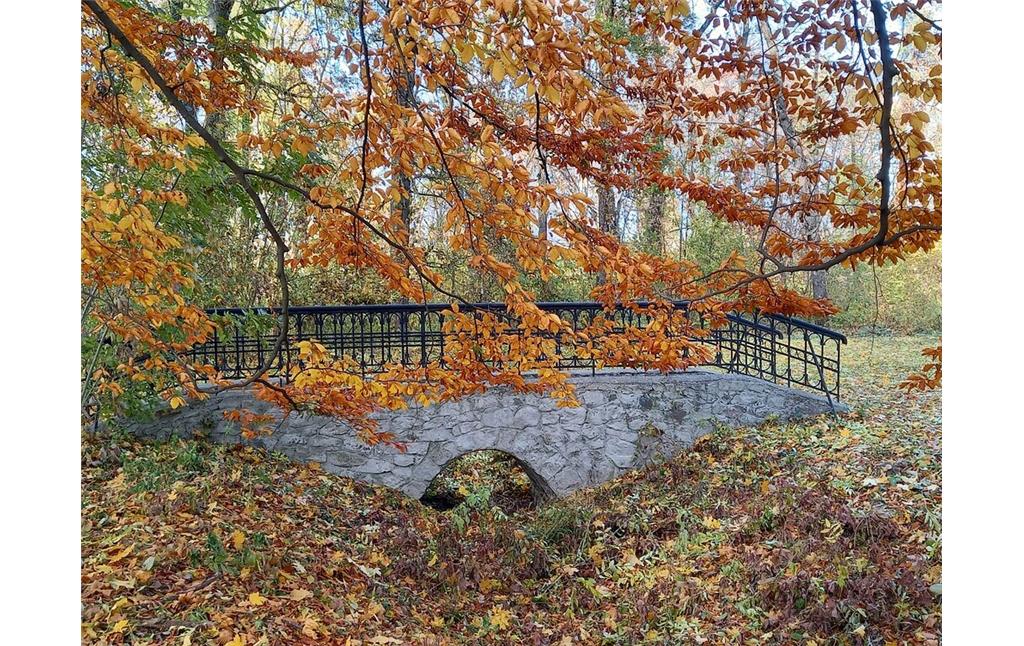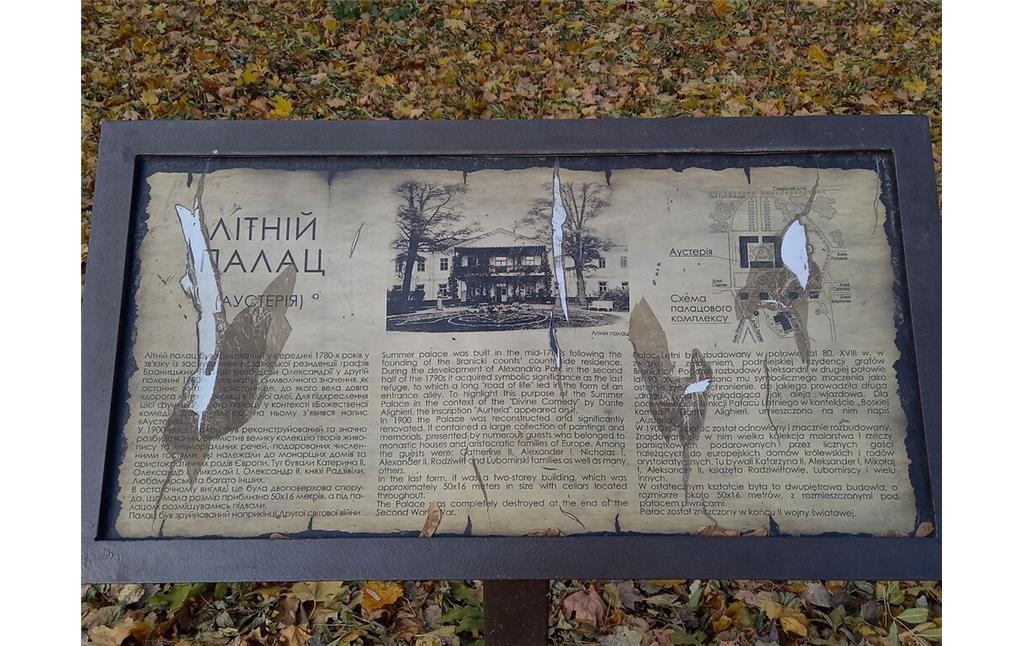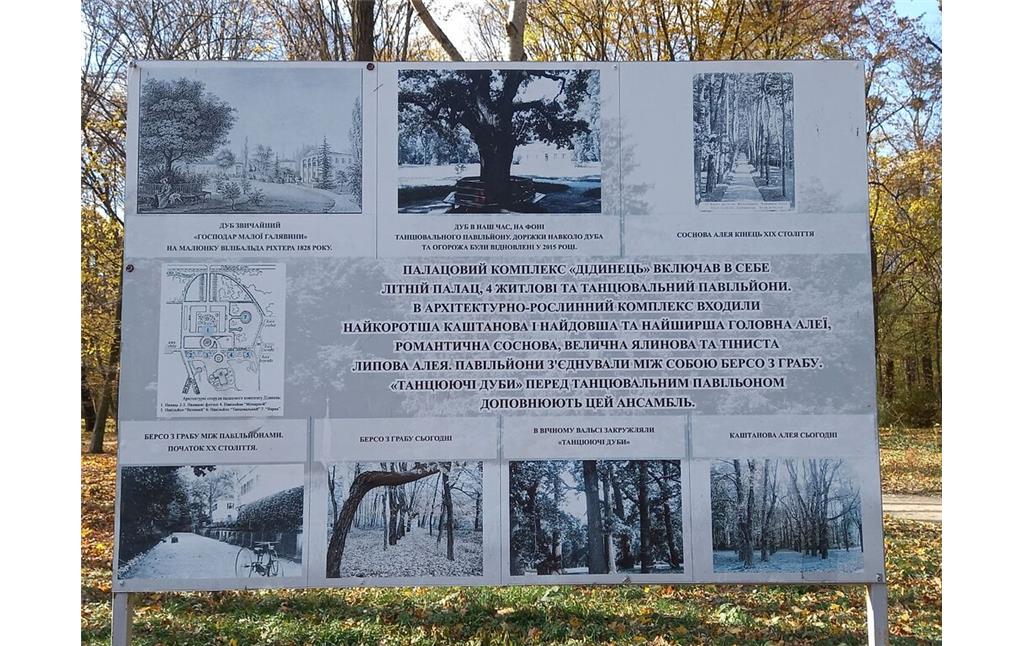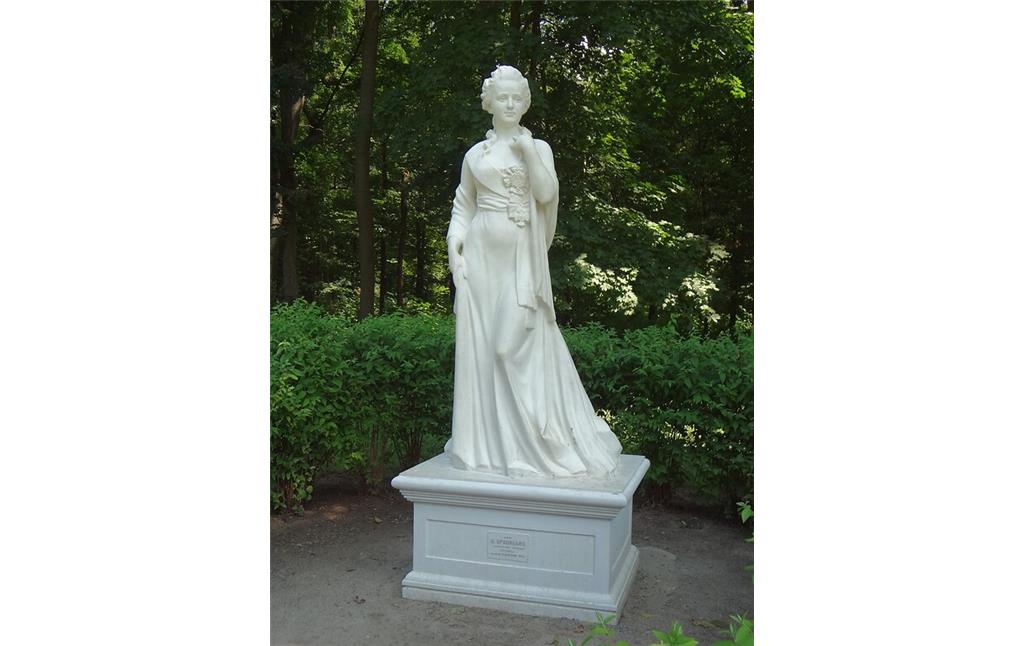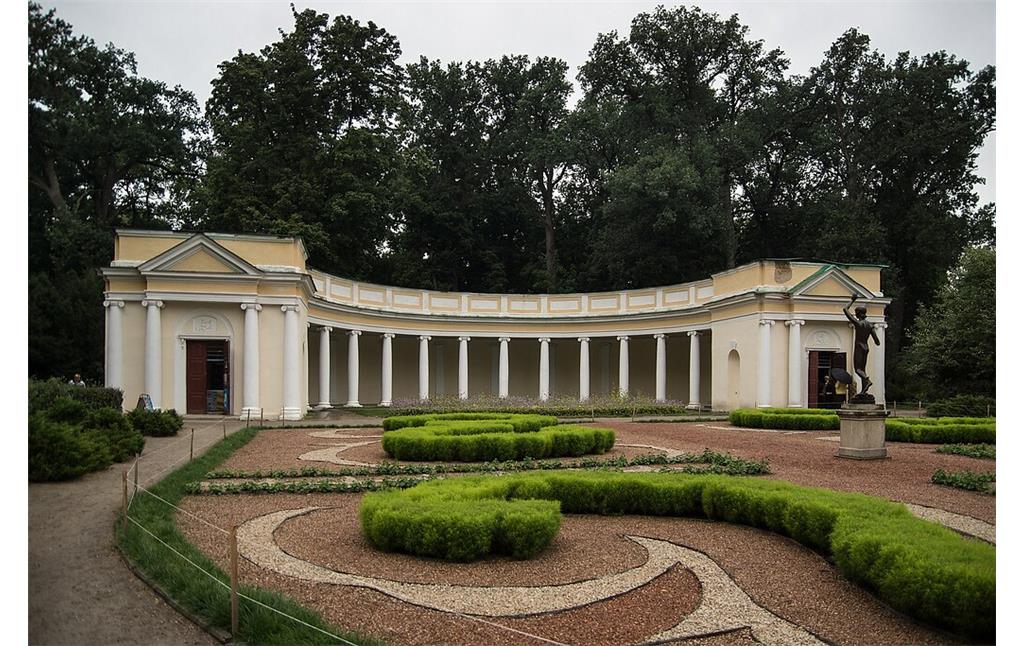
In 1774 the possessions of the Polish King Poniatowski (1732–1798) expanded. The king received the Bila Tserkva eldership, which he presented as a reward for military and political achievements to the Polish Crown Hetman Franciszek Ksawery Branicki (1730—1819). The new lands included villages and towns, among them the town of Bila Tserkva. Soon the count married Oleksandra (1754—1838), the maid of honor of Catherine II (1762–1796) and niece of Prince Potemkin (1739–1791). The Empress sought to maintain peaceful relations with Poland, so she encouraged alliances between Polish and Russian nobles.
In 1784 the Countess received an estate as a gift from her husband. Oleksandra traveled frequently and, inspired by European parks, decided to create an exquisite park on the territory of her summer residence. The hostess named the park in her honor „Oleksandriya“. In the spring of 2014, a monument to Oleksandra Branytska was unveiled.
After the death of Prince G. Potemkin (1739–1791), the Countess received part of her inheritance and built his mausoleum in the park in memory of her relative. Potemkin was hetman of the Katerynoslavsky and Black Sea Cossack troops, nicknamed by the Cossacks Hryts Nechesa (in some legends he appears under the name Katerynych). He led the accession to the Russian Empire and the primitive system of much of the southern Ukrainian territory, where he owned colossal plots of land. In 1775, on the initiative of Potemkin, the Zaporozka Sich was liquidated. Ivan Starov (1745—1808) became the architect.
According to the plan, the mausoleum was to become the central object in the composition of the park. After the death of the Empress came to power Paul I (1754–1801). Branytski lost authority in court. The family was supervised. The Countess had to abandon the construction of the mausoleum, instead, Oleksandra ordered the construction of other buildings.
The author of the park development plan was the architect Muffo. Also highly specialized architects and gardeners worked on the project, whom the Countess invited from Europe. Among them are Bartecki, Witt, Jens, Botani, Stange. They laid the foundation of park compositions. Plants for the park were imported from many European countries.
The construction of the Branytski residence began soon. Near the palace was a complex of pavilions, a ballroom, and utility rooms. Three generations of the Branytski family built the parkIn the twentieth century, the residence and all nearby buildings were destroyed.
Large and small lawns were allocated for the artistic part of the park arrangements. In this part of the park, there are rows of columns connected by a horizontal ceiling, a neat Chinese bridge, an arched bridge, ruins, and two islands of Roses and Mary. The park is decorated with works of art: fountains, waterfalls, vases, and sculptures of bronze and marble. The only park ensemble is formed by neat lawns, ponds of different sizes, and the river Ros.
Not far from the residence was once the office of the housekeeper, who managed the estate's farm. Houses of permanent workers, workshops, gardens, and a greenhouse were concentrated in this place. Nearby was an orchard and fish ponds. Exotic plants such as figs, Chinese roses, cacti, and even pineapples were grown in the Branytski greenhouses. The park administration has been located on the site of the residence since the 1940s.
The arboretum had several gardens, such as the Beautiful Garden, Potemkin Garden, Klyn Garden, and Catherine II Garden. The Moore Garden stood out because it was surrounded by a brick wall to protect heat-loving fruit trees from the weather. The garden has a rectangular shape, its area reaches three hectares. Fruit and berry plants grow in Moore. There is a tasting room in the garden even now.
At the invitation of the Countess in 1815, German gardener August Enz worked in the Branytski Park for 54 years. He created incomparable landscape compositions, which have survived to this day on the Great and Small meadows. For his work, the owners installed a memorial metal column in the park.
After the abolition of serfdom in 1861, the Branytski family lost their labor force. Since then, there has been a decline in the development of the park, as the care and maintenance of the artistic image of „Oleksandriya“ had to pay. Decorative pavilions needed repair but were not rebuilt. The park suffered heavy losses during the Soviet–Ukrainian War 1917-1921. Some of the architectural structures were destroyed and valuable sculptures were removed. In Soviet times, buildings in Oleksandriya were dismantled and trees cut down. The park was used as a source of wood.
In 1922, by the decision of the Kyiv Provincial Committee, the park received the status of a reserve. For more than twenty years, „Oleksandriya“ was part of the Agricultural College, and then the Institute.
The park suffered a lot of damage during the Second World War. During the German occupation, more than three hectares of old trees were cut down. The palace building, outbuildings, pavilions - all this was in ruins.
In 1946, the park was transferred to the National Academy of Sciences of Ukraine. Active restoration work began in the 1950s. Over the years, the alleys in Oleksandriya have been tidied up and provided with water and electricity, an oak alley has also been renovated, and a stone dam has been restored to a walnut meadow.
In 2008, the Oleksandriya Arboretum was nominated for the Seven Wonders of Ukraine project.
Architectural buildings and sculptures in the park
The park ensemble was harmoniously complemented by buildings for various purposes. Unfortunately, not all of them have survived to our time.
- „Rotunda“ - a building in the style of classicism in the form of a semicircular pavilion with a semicircular arch cut in the front wall. The pavilion is a little over ten meters high and nine meters wide. The dome and the arch were decorated with stucco ornaments.
- „Pelican's Column“ - is located near the central alley. At the top of the column, you can see a sculpture of a pelican and his chicks. There is a theory that the column was built in honor of the Freemasons, as the sign of the Masonic lodge was a cross depicting a pelican in the crown.
- „Ruins“ - create the illusion of ruined buildings and play a practical role as a retaining wall. The building consists of two tiers. The lower tier is half in the ground, the second tier is located on the dam. A waterfall flows from under the Ruins. In the center of the building is an observation deck.
- Colonnade „Moon“ - made in the form of a Greek amphitheater in the form of a semicircular wall with a radius. The radius of the wall reaches sixteen meters. A colonnade of fourteen columns forms a gallery. In the time of the Branytski family, this place was decorated with sculptures and vases. Concerts of wind and chamber music take place in the colonnade on holidays.
- „Chinese Bridge“ - a small building, which is a gazebo on the bridge. The lower part of the bridge is made of blocks of granite and sandstone. Bronze sculptures of a Chinese sage and a Chinese woman are installed near the building. According to legend, if you hold on to the sage's beard, all wishes will come true.
- Architectural composition „Varna“. On a small island, there are two fragments of rock, tightened by the hoop in which the sculpture stood.
- Column „Globe“ - made of sandstone. At the top of the column is a globe girded with a silver hoop. The globe shows a map of the Branicki landholdings.
- „Lava Decembrists“ - was established in 1992 in honor of officers involved in the war between Russia and Napoleon, who visited „Oleksandriya“ several times.
- The Lion Spring is a spring of pure water protected by a lion sculpture. The water in the spring is saturated with radon and has healing properties. It is worth noting that the hydro system of the park is huge. In „Oleksandriya“ there are twenty-five reservoirs (Cold, Swan, Mirror, etc.).
Fauna of the park
The species composition of trees, shrubs, and herbaceous perennials is 2240 taxa. Some plants are over 200 years old: black and Weymouth pines, virgin juniper, tulip tree, Polish and European larch, red oak, prickly hawthorn, pink terry hawthorn, and others. Of particular value is the centuries-old oak park, where in addition to 300-400 years-old oaks, many trees and shrubs come from North America, China, Japan, Korea, Western and Southern Europe, Crimea, Caucasus, Far East.
The plant museums include the Large (9 hectares) and Small (4 hectares) Meadows of the park. There are 83 species of trees growing on the Great Meadow, of which 17 are representatives of the local flora and 66 are introduced. Among them is the Branitski family tree, a four-stemmed Scots pine that grows from a single root and then, like a family tree, branches into four trunks. But first, there are five trunks, according to the number of children in the family. At the age of 17, Branicki's son crashed, and fell from a horse, after some time one tree trunk also shrank and died. But the other four we can see today.
Not far from the Luna colonnade grows the favorite tree of Countess Oleksandra Branytska - the Weymouth pine (Pinus strobus L.). This is the oldest tree of this species in Ukraine. In addition to trees, the Great Meadow is the cradle of 97 species of grasses, many of which are on the verge of extinction and are listed in the Red Book of Ukraine.
A rosary is located in the administrative and scientific zone of the park on the area of 0.2 hectares. The terrain is flat, with regular planning. 13 species and 96 varieties of roses fill the air with intoxicating aromas. The garden of vines was planted in the eighteenth century. Of the more than 30 species, five-leaf wild grapes and honeysuckle can be identified, as well as 16 cultivars. Recently, the tree collection was replenished with thuja, fir, spruce, cypress, juniper, and yew. In the landscape compositions of the park grow three native species of roses: R. dumalis Bechst., R. pomifera, R. canina, and 5 introduced species: R. alba L., R. bifera Poir., R. fedoseevii Chrschan., R. multiflora, R. rugosa, in the collection areas of 5 species: R. centifolia, R. corymbifera, R. majalis Herrm., R. rubrifolia, R. spinosissima L.. Varietal roses are represented by 14 garden groups in the following ratios: tea-hybrid (Hybrid Tea) - 47 varieties (49.2%), floribunda (Floribunda) - 9 (9.4%), semi-climbing (Schrub) - 6 (6.3 %), English roses (Englishe rosen) - 6 (6.3%), cut roses (Florists Rose) - 5 (5.2%), climbing large-flowered Climber (Large flowered Climber) - 5 (5.2%), Miniature - 4 (4.2%), Modern Shrub - 3 (3.1%), Grandiflora - 2 (2.0%), Climbing Hybrid Tea - 2 (2.0%), polyanthus (Polyantha) - 2 (2.0%), coils (Rambler) - 2 (2.0%), climbing miniature (Climbing Miniature) - 2 (2.0%), hybrids of rose rugosa (Hybrid Rugosa) - 1 (1.0%).
Syringarium. The lilac collection consists of 9 species, 2 forms, and 31 varieties. Lilac species are represented in park compositions, varietal lilac, and forms (S. chinensis f. Duplex Rehd., S. josikaea Jacq. F ‘Monstrosa’) - in the areas of Syringarii and Fruticetum.
Lian's Garden. The first round woody plants were planted in the park in the XVIII century. These are honeysuckle, or honeysuckle and wild five-leaf grapes. Currently, the collection of twisted woody plants includes 36 species and 16 cultivars.
In the northern and eastern parts of the park, in quite large areas, the dominant species is the common ash - a concomitant species in pure oak forests. As an admixture to ash in these areas are common hornbeam, maple, and leafy linden. Among the aboriginal species in the park, there are also a small number of Scots pine, field maple, sticky alder, hanging birch, goat willow, wild apple, aspen, and others. The following shrubs grow in the undergrowth: barberry, European cowberry, elderberry, viburnum gordovina, hazel, dog rose, and bird cherry.
In the central part of the park, individual black and Weymouth pine trees still look beautiful today, group plantings of European spruce and European larch, bitter chestnut, juniper and virgin juniper, tulip liriodendron in the form of ordinary, which is one of the oldest red and mighty oak trees in Ukraine. In addition, the park has collected collections of woody, shrubby and herbaceous plants. The most numerous are significant collections of individual genera: Hawthorn, Lilac, Garden Jasmine, and Tavolga.
Social influence
At the gate at the entrance, guests were greeted by an engraved inscription in French: „Before entering, consult with your heart: do you know how to appreciate friendship?“
In 1845 and 1847 the prominent Ukrainian poet, writer, artist, public and political figure, folklorist, and ethnographer Taras Shevchenko (1814-1861) visited the park.
Oleksandriya Park is a permanent object of an image by artists and photographers. Paintings with landscapes of the park can be seen and purchased at the permanent exhibition in the Bila Tserkva House of Organ and Chamber Music. The film „Bishop Andrew“ by Ukrainian director Oles Yanchuk (1956) was shot in the park, as well as episodes of the film „Road to Sich“ (1995), in which the colonnade „Moon“, the composition „Ruin“ and the administration building appear.
The huge meadow is called the living Hermitage for its picturesque landscape, unique green compositions, and a record number of plants - 86 species of trees, including nine species and 82 specimens of old trees.
The park is beautiful at any time of year, but the purple garden should be visited in May. Coniferetum - a site for growing conifers was laid in 2008 and 2009. It is possible to admire the compositions created by taking into account their color and height only from tracks outside the sector.
With the abolition of serfdom and the loss of cheap labor, the development of the park came to a halt, and revolutions and wars caused irreparable damage.
The most exquisite architectural structures were destroyed and looted by the Bilshovyky. After drinking the vintage wines stored in the cellars and delivered to the court of the tsar-father, the builders of socialism-communism burned the palace and outbuildings in a drunken stupor.
Testimonies of the rooms of aristocrats and other works of architects of the XVIII century can be seen in copies of drawings by Napoleon's Army and lithographs stored in the Museum of Oles Yanchuk, the former home of the gardener.
Restoration and restoration works have been carried out in the park since 1955.
(Maria Kyianytsia, Lviv Polytechnic National University, 2022. This object was created during the Russo-Ukrainian War in April/May 2022)
